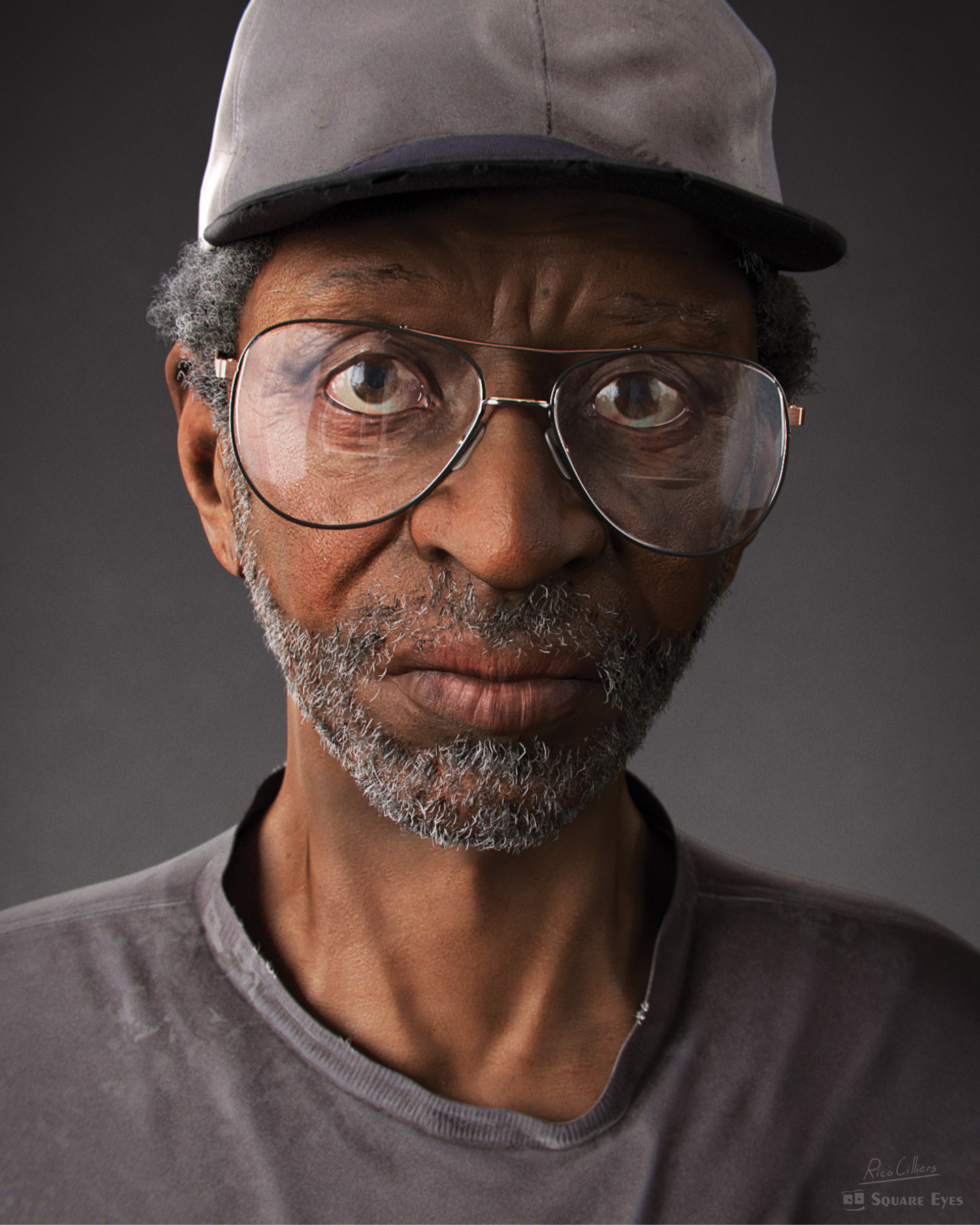Become a better 3D artist
Expert advice for being the best professional you can be.

If there’s one thing that people who work in the 3D art industry agree on, it’s that there are some base-level qualities needed to succeed as any kind of digital creative. It all boils down to passion and determination, but there are numerous tips and tricks that can help you build on these foundations and become the best of the best.
To assemble these words of wisdom, 3D World spoke to freelance creative director Antony Ward, SouthernGFX director Glen Southern, and self-taught freelancer Rico Cilliers.
So what qualities are necessary in order to become a successful professional in this industry? According to Ward, flexibility with your skill set and how you apply it is key. “It’s like being a joiner who only fits doors,” he says.
“Eventually work will dry up, whereas if you can build shelves, fit decking or create bespoke things with wood you will always be busy. The same can be said for polygons. Don’t just be a sculptor when there are so many other services that you can offer to a client when there’s no sculpting available.”

For Cilliers, the devil is in the details: “I recommend developing an eye for detail and a sense of perfectionism. You don’t want to be too nit-picky about things, but clients generally appreciate attentiveness and an ability to spot problems and then solve them.”
Southern maintains that the qualities that really make a difference aren’t creative at all: “The ability to communicate, take feedback, be a team player and finish a project that isn’t the most enjoyable are all skills that will get you hired. Being a kick-ass concept artist is one thing, but if you can’t take direction from your art director, it’ll prevent you from being an effective part of that team. Spend as much time crafting your interpersonal skills as you do working on your art skills.”
Knowing how to deal with clients is one of the crucial ingredients needed to make a perfect professional. The trio have some sage advice when it comes to this: “Effective communication on the job is the most important thing I’ve learned,” says Cilliers.
Daily design news, reviews, how-tos and more, as picked by the editors.
“My clients need to know exactly what they’ll get and how fast they’ll get it, as well as the costs involved. In this line of work, it’s often difficult to predict those things, but you need to be as clear as possible.”

Experience is crucial to approaching your clients, as Southern explains: “The only way to get experience in this area is to do it. Every customer is different and will treat you differently. Whoever the client is, they always want great art at a reasonable price.”
He also agrees with Cilliers’ assertion that communication is key: “If time is tight or something has to give, that’s where the ability to communicate and be honest is absolutely essential. Be honest about your skill level and experience, be honest about how long the project is going to take, and be honest to yourself about your ability.”
He continues: “Something I hear artists say all the time is: ‘say yes, then worry about how to do it later.’ That’s fine until you are knee-deep in a project and realise that it’s not going to work out. Being honest early on can prevent sleepless nights or anguish over a project.”
Ask any digital artist, freelance or otherwise, for the most essential skill they’ve picked up along the way and there’s a strong chance that they’ll say time management.
Cilliers has some very simple tips where this is concerned. “I’ve found that using an app like Google Calendar is really helpful when it comes to time management, as it’s so easy to use. I break tasks into small chunks, then I set personal deadlines for each chunk of work. I also try to take breaks regularly to avoid burning out.”

Ward keeps his days varied as a means of staying on track, “I tend to start work at around 7:30am. Rather than jumping straight into work, I use the first hour or two to work on personal projects, learn new skills, and catch up on emails. The rest of the day is then dedicated to client work.”
He continues: “If I’m juggling a couple of projects, I make sure I divide the day and dedicate an equal amount of time to each, so I don’t get too focused on one and let the other slide. I also make sure to go to the gym a few times a week. If you’re sat at home all the time, you will soon see your health decline and if you’re not well, you’re not earning.”
Southern is willing to admit that honing his time management is an ongoing process, and one he hasn’t fully mastered yet. “I have to be careful to not say ‘yes’ to everything; taking on too much leads to poor-quality work and bad decision making."
"Get that wrong at a high level and it can really damage your reputation. I find being really structured with a diary is a great help – I put everything I do in mine, including fitting things around my personal life."
Creators are likely to already know how important community is in the world of 3D art. Maintaining a presence in this community can do wonders for any professional’s career, as Ward explains.
“Meeting new people in the industry is essential in building a potential client base, so I try to attend networking events like Ga- Ma-Yo (Game Makers of Yorkshire) or Vertex whenever possible. Having a healthy online presence is great too, as it means people all around the world can see what you’re doing and contact you.”

According to Southern, you don’t even need to leave the house to maintain a presence in the community. “Social media is a blessing and a curse, but it’s here to stay so if you want to grow a following you have to accept social media as your key delivery method. Find like-minded artists who do what you want to do and join in."
"Push yourself to share work and try new ideas within a safe group environment. Do competitions and challenges to see where things lead and get people interested in what you do along the way.”
Cilliers builds a community through collaboration with his fellow artists. “For me it’s always been effective to involve other people in my personal creative projects,” he explains.
“Typically I like to post ‘work in progress’ screenshots of my art, and I ask people online to give feedback. People love contributing ideas, and this generally leads to a pleasant community interaction. You also get valuable advice. It’s a win-win situation. Also, get on ArtStation, it’s the best place to be for any and all digital artists.”
So you have the basic qualities needed to succeed, an idea of how to deal with your clients, and a decent footing in the community, but how do you know what to charge for your services?
If you do good work, and your pricing is honest, you will find clients
Rico Cilliers
“It’s really quite simple,” asserts Cilliers. “Add up all your monthly expenses, account for the possibility of unforeseen costs, as well as profit, then divide that amount by the number of hours you work per month. This will give you a basic hourly rate."
"There’s really no right or wrong way to do it, as long as you’re not underpricing your work. Don’t be afraid that your prices might be too high either. If you do good work, and your pricing is honest, you will find clients.”
To Ward pricing is something of a minefield. “It’s difficult because if your rates are too high people won’t hire you, but set them too low and you won’t get time to sleep. With that said, if your prices are low a client won’t have confidence in your work."
"I would suggest deciding on a day rate that you’re comfortable with, one which means you’re making enough money to pay the bills. With that in mind I always try to work to a client’s budget. If the budget is smaller I see if the schedule is more flexible, so I can take longer to do the work whilst doing something else to top up my earnings for the month.”

Even after everything covered in this article, there are still many factors that people forget to consider when setting out as a digital creative. For freelancers in particular there is the constant pressure of running your business and making sure that the work is coming in.
There are however considerations that apply to anyone, as Southern lays out: “You have to get used to the fact that you won’t get to work on what you want for 90 per cent of the time. You could get lucky and work on things you love, but bear in mind that’s harder for freelancers than employees.”
He concludes: “You will get harsh criticism, critique and feedback sometimes. You will produce work that you may consider your best and it can be dropped in a heartbeat. Don’t get too emotionally attached to a piece of work, it’ll always sting a little at first but that wears off."
"One thing I always say about being a creative is that the lows are low but the highs are higher. There’s no better feeling than getting a piece of art right and your client loving it."
This article was originally published in issue 240 of 3D World, the world's best-selling magazine for CG artists. Buy issue 240 or subscribe to 3D World here.
Related articles:

The Creative Bloq team is made up of a group of art and design enthusiasts, and has changed and evolved since Creative Bloq began back in 2012. The current website team consists of eight full-time members of staff: Editor Georgia Coggan, Deputy Editor Rosie Hilder, Ecommerce Editor Beren Neale, Senior News Editor Daniel Piper, Editor, Digital Art and 3D Ian Dean, Tech Reviews Editor Erlingur Einarsson, Ecommerce Writer Beth Nicholls and Staff Writer Natalie Fear, as well as a roster of freelancers from around the world. The ImagineFX magazine team also pitch in, ensuring that content from leading digital art publication ImagineFX is represented on Creative Bloq.
